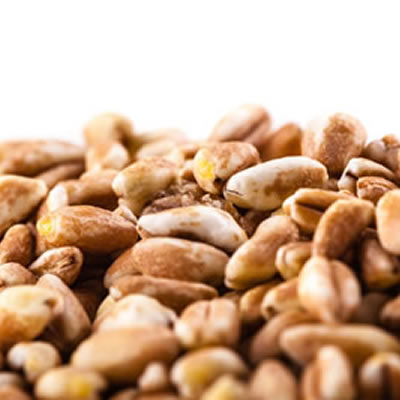Origin
Spelt is an ancient crop which dates back to 2500-1700 BC. It was cultivated in Central Europe, mainly Germany and Poland. However, it spread throughout northern Europe during the Bronze Age to compete with emmer wheat. The first millennium saw a decline in spelt cultivation and was replaced by common bread wheat.1
Currently, spelt is grown in limited quantities in Eastern and Central Europe, Canada and the US.
Function
Spelt has different functionality compared to common wheat, due to its unique characteristics:
- Higher total gliadins and lower glutenins: soft dough with low elasticity
- Higher wet gluten: weaker gluten structure in most baked goods
- Less reducing sugars (e.g. maltose): lower degree of fermentation
- High nutritional value
- Strong distinct taste and flavor
Nutrition
Spelt wheat is considered a highly nutritious grain. This is mainly because of its high protein (12-15%) and crude fiber (10-15%) content, in addition to vitamins and minerals. Similar to other wheat varieties, spelt flour contains gluten. Therefore, is not safe for people with celiac disease.2
Commercial production3
The following process describes the commercial production of spelt flour:
- Cleaning: grain separation from contaminants by sieving and air blowing through several screens.
- Tempering: addition of water (up to 16%) to increase the grain moisture content.
- Breaking: conditioned grains pass through milling rolls to break the hulls followed by sieving.
- Purification: lower density particles are blown out.
- Reduction: the remaining particles are milled again to further reduce their size.
- Release: further sieving to recover the fine flour.
Baking with spelt
Application
Generally, spelt flour has a good potential for many end-uses. Currently, it is used in the production of bread, sourdough, cookies, biscuits, cakes and muffins, pastas and nutrition bars. Typical spelt bread is the German Oberschwäbische rolls which are characterized by irregular crumb structure and crisp crust.
When using spelt flour, bakers should keep in mind some considerations including:
- Weaker gluten network and lower volume compared to wheat flour. Because of this, the dough should be mixed for short periods of time.1
- Lower water absorption capacity, so less water is needed to form batters and doughs. It can be used instead of wheat for softer breads.1
- Lower dough stability and higher extensibility than wheat flour doughs. This can be compensated for either by addition of ascorbic acid or extending dough resting time.2
- Lower loaf volume than those made with other wheat types.2
- Substitution of 50% bread flour with spelt flour may require a reduction of added water (approx. 10%) to yield better loaf volumes.
FDA regulations
Spelt flour is considered a gluten-containing product by the FDA. It must be declared as a food allergen.4
References
- Taylor, John R. N, and Peter S Belton. Pseudocereals And Less Common Cereals. 1st ed., Springer-Verlag Berlin Heidelberg, 2002, pp. 153-173.
- Kohajdová, Zlatica, and Jolana Karovicova. “Nutritional value and baking application of spelt wheat.” Acta Scientiarum Polonorum Technologia Alimentaria 7.3 (2008): 5-14.
- Cauvain, S.P. Breadmaking: Improving Quality. 2nd ed., Woodhead Publishing Limited, 2012, pp. 188-200.
- Food and Drug Administration (FDA). US Department of Health and Human Services. CFR Code of Federal Regulations Title 21, Part 101 Food Labeling, https://www.accessdata.fda.gov/scripts/cdrh/cfdocs/cfcfr/cfrsearch.cfm?fr=101.91, Accessed 18 April 2020.

